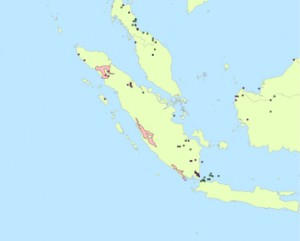- FAO slideshow on Egyptian rabbits.
- Journal of Agriculture, Food Systems, and Community Development calls for papers on urban agriculture. Will some look at the intersection with art?
- And IAALD re-launches its journal.
- “…students receiving online encouragement from the national soccer star reported going to bed at night looking forward to receiving their iron supplements the following morning.” Great, of course. But why not iron-rich foods?
- Speaking of which, there’s a new FAO publication on “Foods counting for the Nutritional Indicators Biodiversity.” No, I don’t quite understand it myself. Something to do with what foods count towards CBD biodiversity targets. Well, it’s the International Year of Biodiversity, after all.
- Indeed it is. And Nature makes the most of it. See what I did there? No agriculture though, natch.
- Extension gets a forum?
- Biotech can be useful in organic farming? Say it ain’t so!
- More evidence of shifting baselines in people’s perceptions of biodiversity. How quickly they forget.
- Will they forget what forests look like?
- The Vavilov Institute potato collection needs a thorough going over. Taxonomically, that is.
- Making salt in mangrove ponds in Fiji. Nice video. Not agrobiodiversity, but it’s my blog and I like seeing Fiji on it.
- CGIAR abandons agrobiodiversity? Say it ain’t so. Anyone?
- Speaking of megaprogrammes, there’s going to be one on agricultural adaptation to climate change, right?
- “So, how does huitlacoche taste? Does it matter?? LOOK AT IT! I guess it would be fair to say it doesn’t taste as truly horrible as it looks. The flavor is elusive and difficult to describe, but I’ll try: ‘Kinda yucky.'” Don’t believe him! And read the rest.
Nibbles: Orchards, wild wheats
- What is it with the English and their orchards?
- Wild wheat relatives, their status in Armenia.
Nibbles: China, Andean roots and tubers, pigs, greenhouse gases, locavores, drought, mapping horticulture, 2010 Growing Green Awards, canker, World Bank, threats, cashmere
- China’s role in food price spikes. Books sounds worth reading.
- Dutch chefs easily fascinated. Just show ’em an Andean root or tuber.
- Much more on that pig domestication story.
- Global Research Alliance on Agricultural Greenhouse Gases agrees its agenda. In New Zealand. Jeremy avoids snarky remark.
- New York Times debates locavorism. Someone has to.
- Monsanto, DuPont Race to Win $2.7 Billion Drought-Corn Market. Africa says Yay!
- If you have an horticultural development project, Horticultural CRSP and GlobalHort want to hear from you.
- More environmental awards handed out. Recipients asked to blog.
- Chestnuts out of fire?
- Data!
- Really, who’d be a farmer?
- Chinese clone woollier cashmere goats. Why not just clone the wool directly, cut out the middleman?
- Tales of maize and tomato hybrids.
Protecting edible orchids around the world
Well, national parks may not be all that great at conserving crop wild relatives, but a fascinating article in the latest newsletter of the SADC Plant Genetic Resources Network, which is unfortunately not online, alerts me to the fact that a Tanzanian national park was set up a few years back to protect edible orchids.
Last year, WCS released a report documenting how the region’s orchids were being exploited by local people, who exported the plants into neighboring Zambia, where they are eaten as a delicacy. The report says that up to 85 orchid species are being harvested for use in chikanda or kinaka, a delicacy in which the root or tuber of terrestrial orchids is the key ingredient in a type of meatless sausage.
Chikanda is an unsustainable industry in Zambia itself. Edible orchids are also big in Malawi. And they’re sought after in other parts of the world as well, notably Turkey, where their use in making a delicious traditional desert is endangering them. I couldn’t find any reference to protected areas in Turkey being set up specially for them, but the commercial export of the orchids has been banned since 2003.
Wild rices in the Protected Area of the Week
Those happy few, that band of brothers, who follow us on Twitter will know that the Tropical Rainforest Heritage of Sumatra is IUCN’s Protected Area of the Week. It is actually three protected areas: the Gunung Leuser National Park, the Kerinci Seblat National Park and the Bukit Barisan Selatan National Park. Great for Indonesia’s largest mammals, apparently, and I asked the question in my tweet whether they are equally good for wild rices.
Quick as a flash, Nora Castaneda at CIAT produced a map of wild rice accessions from Sumatra, based on IRRI data. Turns out two accessions of Oryza officinalis have been collected from the Gunung Leuser National Park. That’s the northernmost of the three protected areas, shown in pink.
GIBF doesn’t add much, unfortunately. But there could well be a number of other wild rice relatives in these parks. That we don’t know, or at any rate that it is pretty difficult to find out, is really an indictment of the disconnect between the agrobiodiversity and nature conservation communities.
